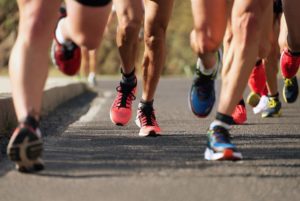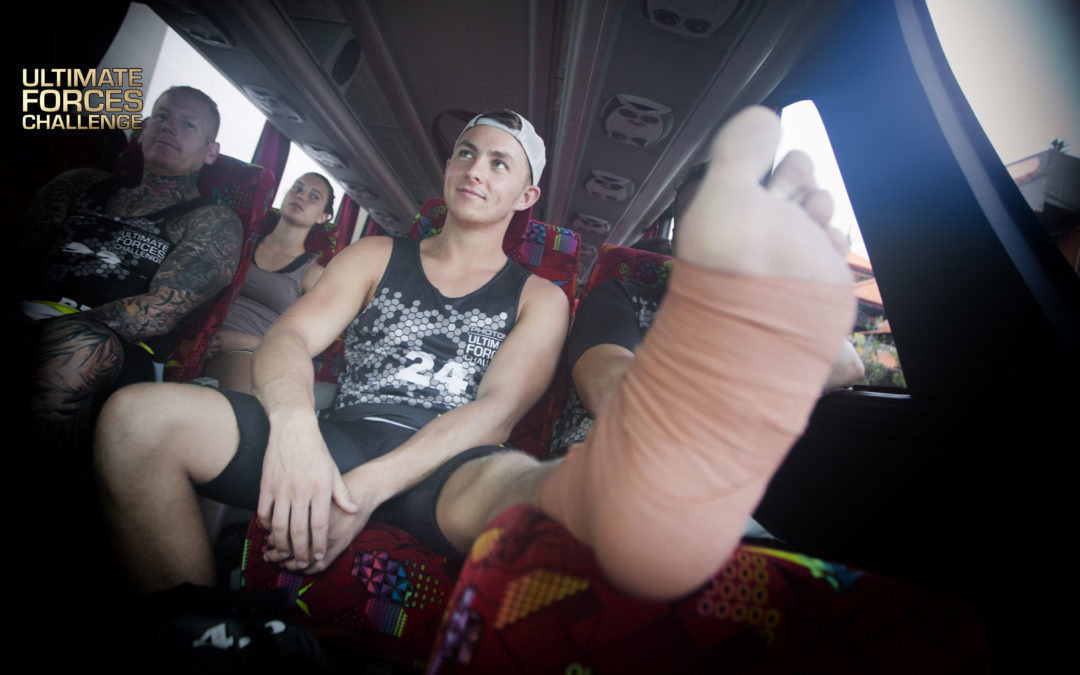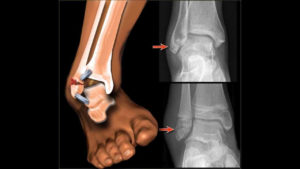Researchers believe old-school recovery and rehab acronyms like RICE may not be cutting it anymore. Try these instead.
- New acronyms PEACE and LOVE have been created to help ensure optimal recovery for soft tissue injuries, which can include things like sprains and strains.
- Old acronyms like RICE do not align with current research and may not be effective, researchers write in the British Journal of Sports Medicine blog.
- Adhering to updated injury treatment acronyms can help you heal faster.
You might be familiar with the old acronym RICE (rest, ice, compression, elevation) for treating soft-tissue injuries. But now, an easier—and arguably more chill—acronym might be your secret to better recovery: PEACE and LOVE, according to researchers writing in the British Journal of Sports Medicine blog.
Pesky soft tissue injuries—like sprains and strains to your muscles, tendons, and ligaments—can keep you sidelined. To aid in recovery, experts have developed these new acronyms, which encompass care of the injury from the moment it happens to when you get back on the roads.
The old acronyms like RICE just aren’t cutting it anymore, Blaise Dubois, P.T., founder of The Running Clinic in Quebec, Canada, told Bicycling. For one, new research doesn’t support the rest-ice-compression-elevation process. RICE doesn’t focus on all stages of healing, and may take time-off-your-feet a little too far. Plus, it leaves out the important psychological aspects of recovery, Dubois said.
That’s why Dubois and Jean-Francois Esculier, Ph.D., a postdoctoral fellow at the University of British Columbia and director of research and development at The Running Clinic, developed the new PEACE and LOVE guidelines.
These new acronyms focus on five important things: reordering the rehab steps; advising against anti-inflammatory medication, focusing on psychological issues of injury and recovery; promoting cardiovascular activities to increase metabolism and tissue repair; and educating on realistic recovery times.
[Stay injury free on the road by getting on the mat with Yoga for Runners.]
So how to use it? PEACE comes in first to address the rehab continuum from immediate care, while LOVE kicks in later to manage the injury throughout recovery.
When using PEACE, you should:
- Protect—Protect the injury by restricting movement for one to three days to minimize bleeding, prevent swelling, and reduce risk of aggravating it.
- Elevate—Elevate the limb higher than the heart to promote fluid flow out of the injured tissue, which can reduce swelling.
- Avoid—Avoid anti-inflammatory pain relievers, as research has shown they may be detrimental to long-term tissue healing. Cryotherapy may disrupt healing, too.
- Compression—Compress the area by applying pressure with a bandage to reduce swelling.
- Educate—Seek out information from a therapist or medical professional about how active recovery can help and how long recovery should take.

After immediate treatment with PEACE, LOVE kicks in to help you continue to manage it.
- Load—Resume normal activity as soon as you can. Dubois said normal activity can be resumed one day after injury if there’s no pain.
- Optimism—Stay optimistic from day one, Dubois stressed. By staying realistic, but optimistic, this enhances optimal recovery, as studies have shown that your brain and your outlook can play a role in recovery.
- Vascularization—Start easier aerobic exercise on day three if no pain lingers.
- Exercise—Return to normal exercise, but when you actually get back to your regular routine is dependent on the injury and pain.
“Whether they are dealing with an ankle sprain or a hamstring strain, we hope this BJSM blog post will encourage clinicians to give PEACE a chance, because perhaps all soft tissue injuries need is LOVE,” the researchers said in their BJSM post.
So next time a strain or a sprain leaves you on the sideline, think positive thoughts of PEACE and LOVE to help you get back to your workouts faster.
A true love for sports



Recent Comments